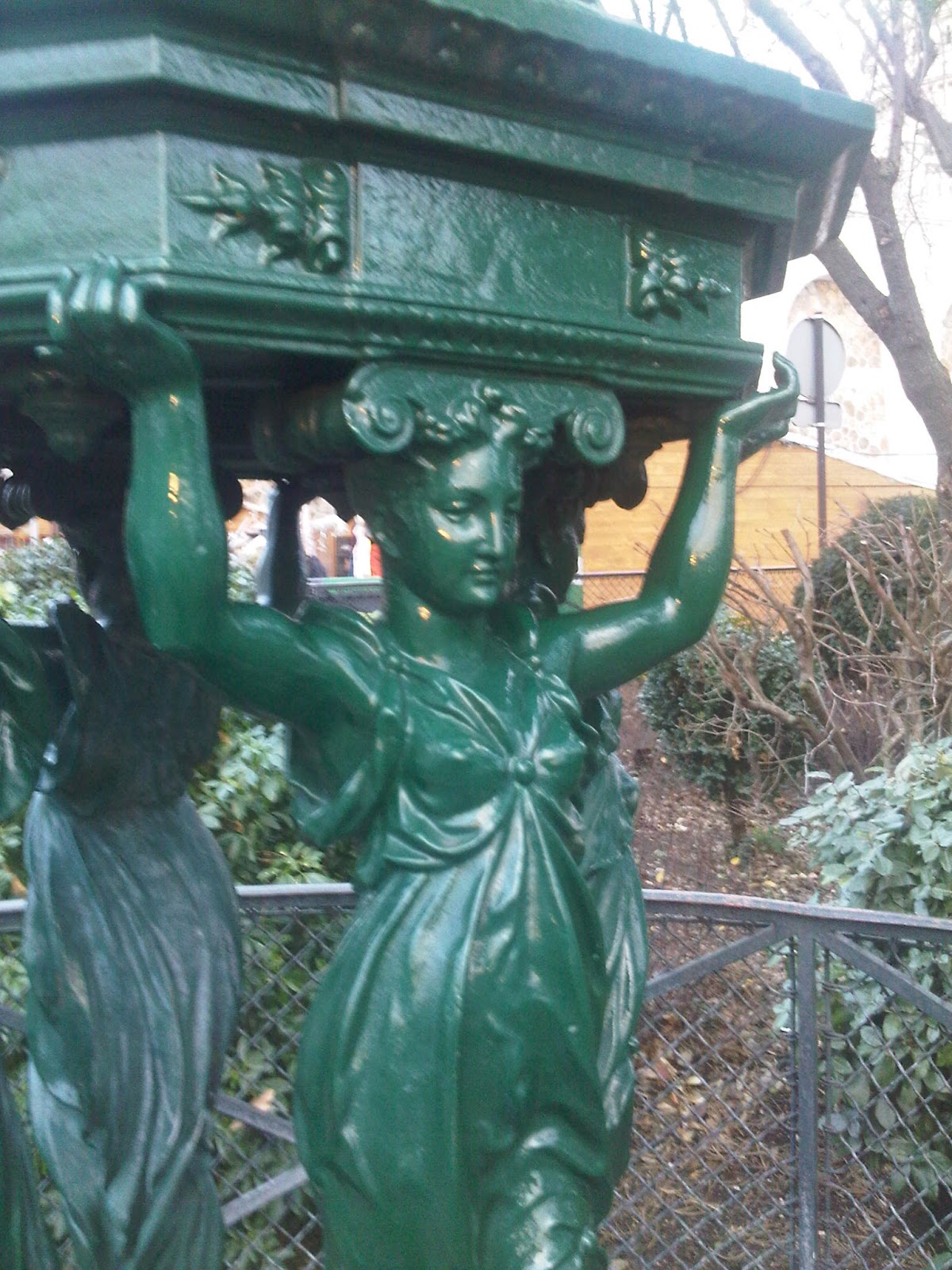Sacré Choeur Basilica
Jean-François de la
Barre statue
A statue of Jean-François de la Barre is located in the Nadar garden (Square Nadar), at the feet of the basilica. The current
bronze statue is the work of sculptor Emmanuel Ball (and Kalkolitik was the art
foundry). It was installed in the garden in February 2001.
To the Chevalier de La Barre
Who was tortured to death
On July 1st, 1766
For not saluting
A Procession
De la Barre became a symbol of religious intolerance and remained in
French history thanks to Voltaire, a
French writer and philosopher who professed humanism and opposed intolerance in
any form. I would recommend that you read Candide by Voltaire (available at
Project Gutenberg in French and in English)
The base of the statue is inscribed with a quote by Voltaire
from his Dictionnaire Philosophique (Philosophical Dictionary): “The most remarkable
is the universal tolerance” (or in French “La plus remarquable est la tolérance
universelle”)
The plinth is older than the current statue. A first statue,
created in 1900, represented de la Barre chained to a column. It was judged disquieting
and moved in 1926 to a remote place, before it was destroyed in 1941.
Wallace Fountains
Just outside the Nadar Garden is a Wallace Fountain. These beautiful fountains were
financed by Sir Richard Wallace, an English philanthropist who lived and
died in Paris. He wanted to make sure that homeless people in Paris would not
have to pay for fresh water.
Graffiti
When you go down the stairs (a few hundreds of them) to go
back to the bottom of the hill, you can see a wall full of graffiti.
General De Gaulle meets Bob Marley

















